I love the versatility and incredible nutrition of cabbage! These 20 healthful cabbage dinners and sides will help you to incorporate this humble and inexpensive vegetable into more of your meals.
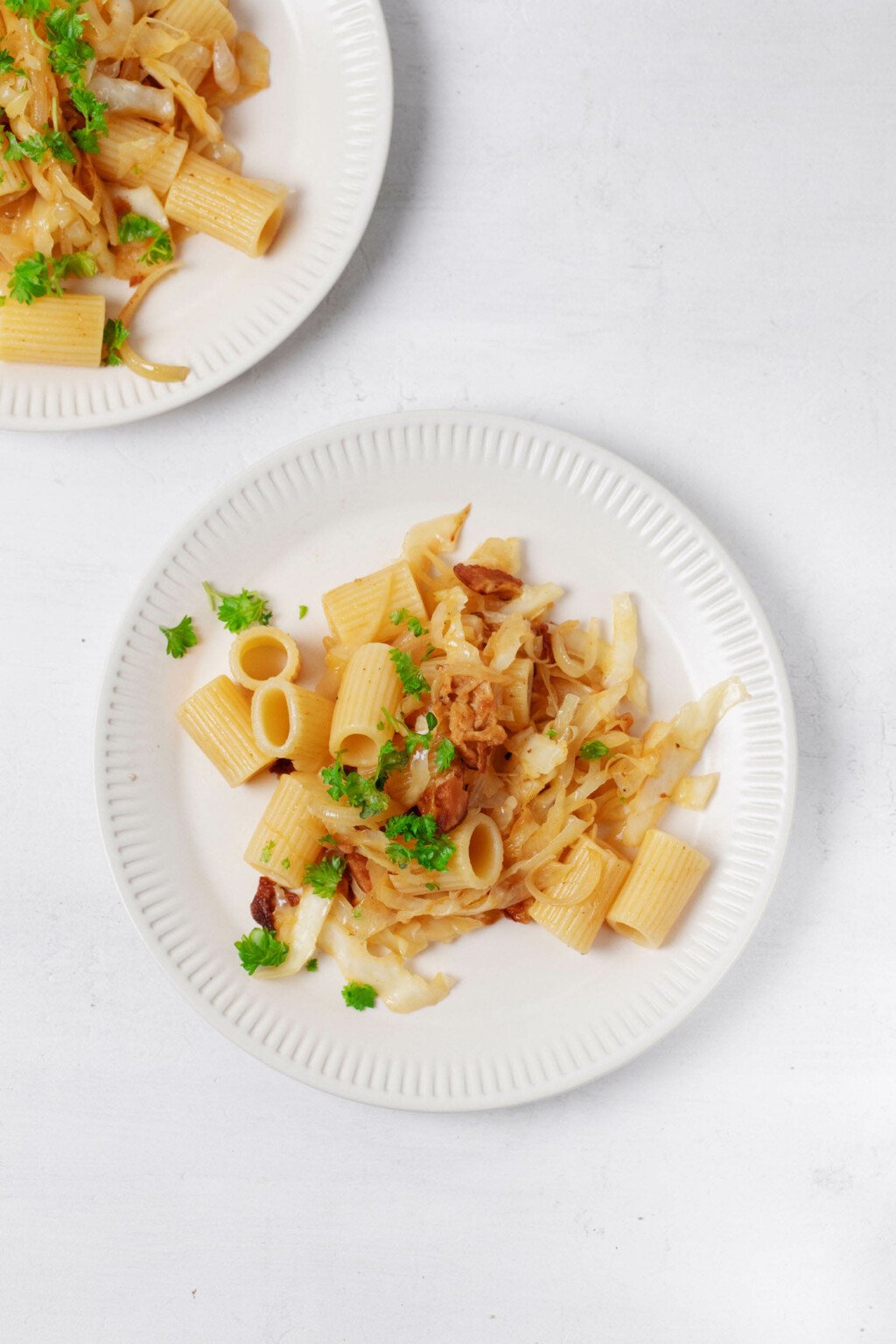
I get so excited when I read about, think about, or prepare any recipe with cabbage.
Yes, cabbage. Within the vegetable kingdom, I know that cabbage isn’t always greeted with as much excitement as some of its neighbors.
Even among crucifers, cabbage is unflashy. It seems to receive less attention than broccoli, kale, Brussels sprouts, and cauliflower.
There is no reason for this, however. Cabbage more than holds its own in nutrient density when compared to those vegetables. In some ways, I think that it has greater versatility than they do when it comes to texture and preparation styles.
Cabbage is available year-round where I live. But I feel a special kind of appreciation for it in the deep winter, when it’s one of the few vegetables that is fresh and abundant at the farmer’s market.
There’s nothing I love more than finding myself at home with a giant head of cabbage, thinking about what I’ll prepare with it. I know that I can easily use for two or sometimes even three cabbage recipes.
Today, I’m sharing some of my favorite cabbage dinners and side dish recipes with you. May this winter be a time to celebrate cabbage in all of its forms: crunchy, tender, raw, cooked, savory, and sweet!
I’ve divided this cabbage deep dive into sections:
- Cabbage vegetable family
- What does cabbage taste like?
- Raw vs cooked cabbage
- Cabbage nutrition
- Types of cabbage
- How to cut up a head of cabbage
- How long can I store cabbage for?
- 20 vegan cabbage recipes
- Caramelized cabbage onion pasta
Before diving into recipes, let’s chat a bit about what cabbage is.
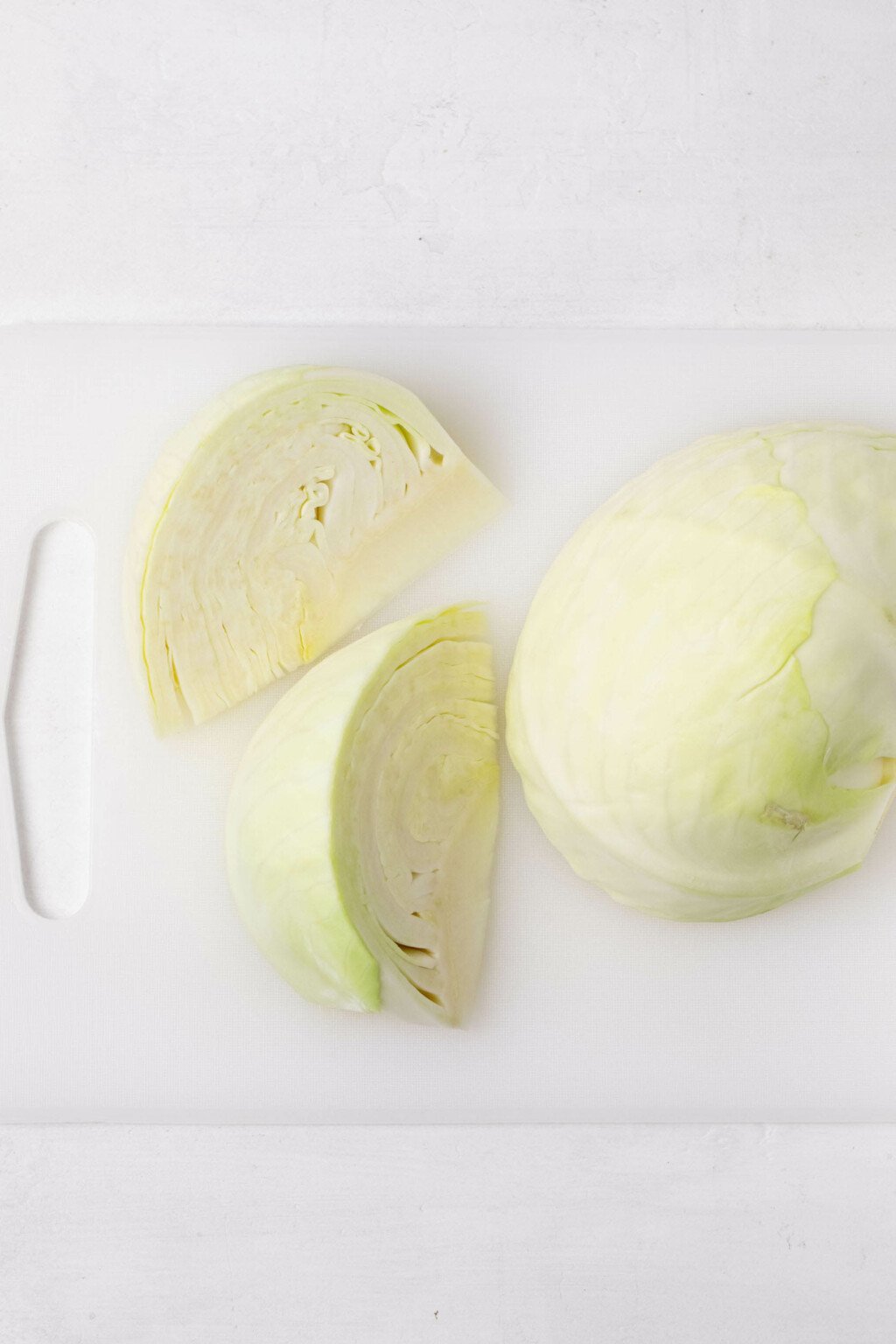
Cabbage vegetable family
Cabbage belongs to a family of flowering plants known as Brassicaceae. The vegetables in this family are also commonly known as mustards and, very aptly, the cabbage family.
When I was writing this post, I was confused about Brassicaceae (brassicas) vs. Cruciferae (crucifers), which is the other classification that I know of for cabbage.
Turns out, Cruciferae is just an older and alternative name for Brassicaceae.
“Cruciferae” is latin for “cross-bearing.” It’s a reference to the shape of the cross-shaped, four-petaled flowers that cruciferous vegetables produce.
Other Brassicaceae family members include:
- Cauliflower
- Kale
- Broccoli
- Turnips
- Rutabaga
- Radishes
- Kohlrabi
- Bok choy
- Collard greens
- Arugula
- Mustard greens
- Brussels sprouts
These happen to be some of my very favorite vegetables to eat.
What does cabbage taste like?
Brassicas tend to have slightly bitter, sharp, and peppery flavors. I love this flavor profile, and I think it’s part of why cabbage is such a favorite of mine.
The beautiful thing about cabbage, though, is that its sharp bite can be entirely transformed with cooking.
When you braise, simmer, sauté, or roast cabbage for enough time, it’s pepperiness and bitterness give way to a lovely, deep sweetness of flavor.
While I enjoy the assertiveness and crunch of raw cabbage, I also love to bring out this sweet side of its character.
Raw vs. cooked cabbage
One of the nice things about cabbage is that it has so many culinary uses in both its raw and cooked forms.
Raw cabbage
In its raw form, cabbage is delightfully crunchy and crisp. It can be sliced or shredded very thinly or left a little more thick, for more texture.
When I prepare raw cabbage, I typically use my food slicer for ease and uniform slicing. However, you can also use a food processor or simply a sharp chef’s knife for this job.
Here’s just a small sampling of the cabbage recipes that you can create with raw cabbage:
- Salads
- Traditional coleslaw and other slaws
- Shredded cabbage for crunch in tacos or burritos
- Cabbage ”cups” for beans, tofu, tempeh, whole grains, or other nutritious fillings
- Sauerkraut or lacto-fermented cabbage
Cooked cabbage
Cooked cabbage becomes tender and sweet. It has wonderful range in recipes!
Cabbage can be cooked with many different methods. You can roast, sauté, steam, or bake it. Steaming cabbage will help the vegetable to retain a bit of its crunch and freshness.
Sautéing and roasting cabbage will allow the vegetable to release its assertive quality and crunchy texture. The longer you cook cabbage, the more mellow, sweet, and soft it will be.
Cabbage nutrition
As a registered dietitian, it’s hard for me not to become comically enthusiastic when I write about the remarkable nutrient density of cabbage.
Cabbage is chock-full of so many powerful micronutrients and phytonutrients. These include the following, but aren’t limited to them.
Vitamin C
A single cup of shredded cabbage contains more than 50% of the adult RDA of Vitamin C, or ascorbic acid.
Ascorbic acid is an antioxidant, which means that it can help to guard against oxidative damage and its associated inflammatory effects. Ascorbic acid is also important for overall immune function, as well as absorption of iron from food.
Vitamin K
Vitamin K is a fat soluble vitamin that’s necessary for the production of two important proteins. One is prothrombin, which plays a key role in blood clotting.
The other is osteocalcin, which is produced by osteoclasts in our bones. Osteocalcin plays a role in metabolism and is increasingly thought to play a role in cognition and reproduction, too.
There are two naturally occurring forms, or vitamers, of Vitamin K. One is a group called menaquinones, often labeled as Vitamin K2. Menaquinones can be obtained through some animal foods as well as natto, or fermented soybeans.
The other is phylloquinone, also labeled as Vitamin K1. Phylloquinone is supplied abundantly by brassicas, cabbage included!
Phytosterols
Phytosterols are a type of plant compound that has a similar molecular structure to cholesterol.
For this reason, they compete with cholesterol in digestion pathways, essentially blocking cholesterol absorption. Phytosterol consumption has been shown in studies to have the effect of lowering total and LDL cholesterol.
Cabbage is a good source of phytosterols generally. Chinese cabbage, one type of which is also called Napa cabbage, is an especially good source.
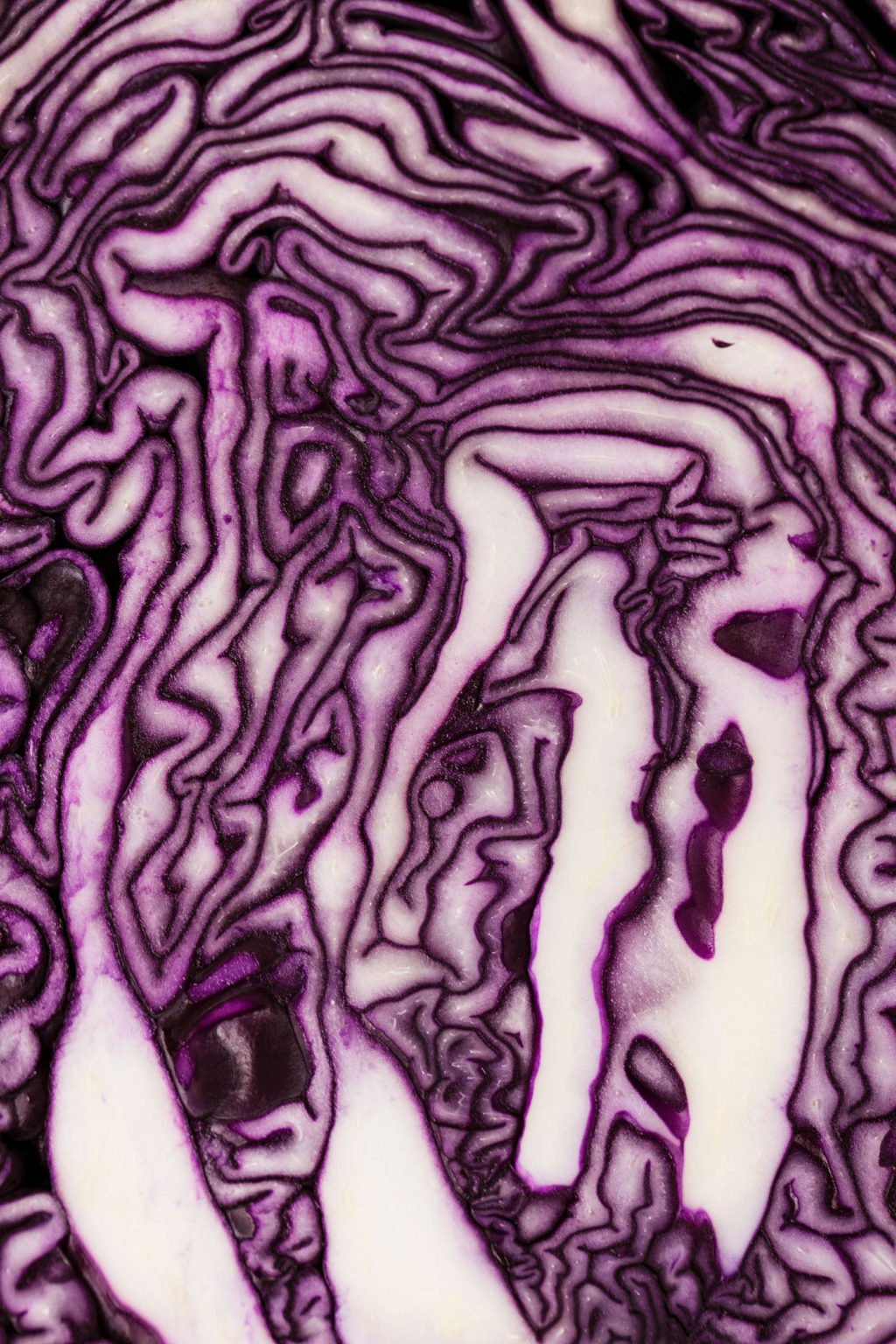
Anthocyanins
Anthocyanins are a type of pigment that’s found in red, purple, and blue fruits and vegetables. Accordingly, red cabbage is an excellent source of anthocyanins.
This is good news, because anthocyanins are, like the Vitamin C that’s also in cabbage, antioxidants.
Their antioxidant activity helps to explain why anthocyanins have been associated with protecting the cardiovascular and nervous systems, both of which are susceptible to oxidative stress.
Anthocyanins are associated in particular with neuroprotective properties, which means that they may have a positive impact on neurological health and the prevention of cognitive decline.
You may have read at some point that blueberries are a positive food choice for those looking to boost brain health, and this is why.
Similarly, the anthocyanins in red cabbage may help to support longterm cognitive health and function.
Glucosinolates
Glucosinolates form from cabbage and other brassicas, including kale, broccoli, and arugula. They’re sulfur-containing plant compounds that contribute to the bitter taste we tend to associate with these cruciferous veggies.
Like anthocyanins, glucosinolates are increasingly being studied for their potential to support cardiovascular and neurological health through combatting oxidative stress.
Glucosinolates become bioactive when brassicas are broken down through chewing or chopping. This is a reason to chew your cabbage slaws and slice or chop your cabbage before cooking it!
Fiber
Finally, cabbage is also a great source of dietary fiber, which contributes to digestive health and satiety after meals.
Dietary fiber also plays a role in helping to lower LDL cholesterol, which is the “bad” cholesterol associated with increased risk of cardiovascular disease.
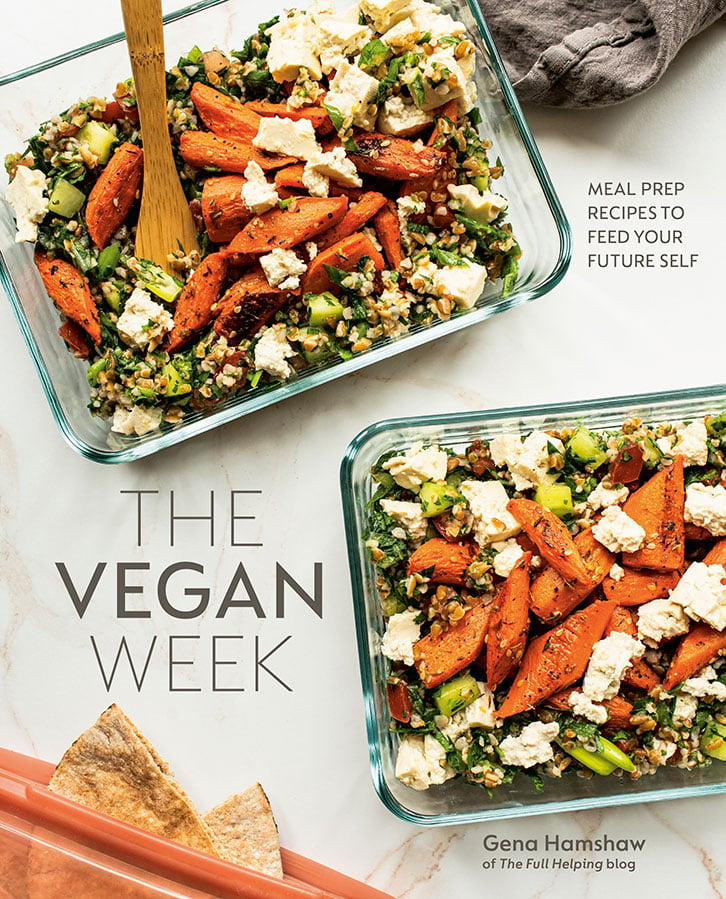
The Vegan Week
Embrace the joy of eating homemade food every day with the hearty and wholesome recipes in The Vegan Week.
Whether you have three, two, or even just one hour of time to spare, The Vegan Week will show you how to batch cook varied, colorful, and comforting dishes over the weekend.
Types of cabbage: green vs. red vs. Napa
There are apparently over 400 varieties of cabbage grown worldwide. Here are the ones that I most commonly use in my recipes, and which you might encounter most often in stores:
Green cabbage
Green cabbage comes in globe-shaped heads, which can range in size from small to large (bigger than a human head, for sure).
This type of cabbage grows throughout the United States. In the Northeast, where I live, green cabbage is abundant in colder months, but it can usually be found easily year-round.
Green cabbage can be eaten raw or cooked. It’s generally inexpensive, and, as we’ve seen above, it’s highly nutritious.
If you see a head of green cabbage that seems to have very wrinkled leaves, there’s a good chance that it’s savoy cabbage. Savoy cabbage is a green cabbage variety that’s named for the Savoy region in France.
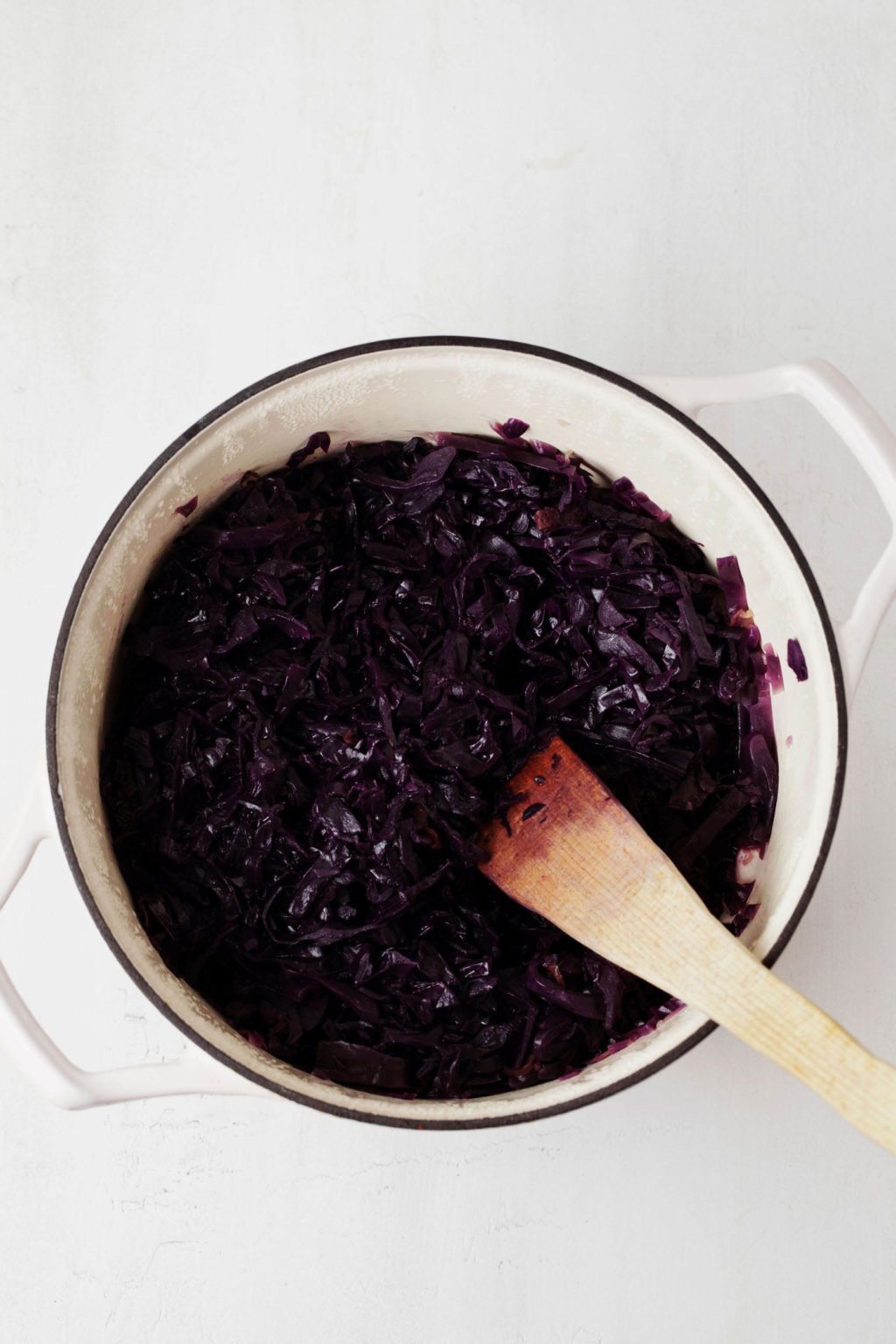
Red (or purple) cabbage
Is it red or is it purple? I’m sure I’ve used both designations on this blog, but usually, I refer to it as red cabbage.
In any case, this variety of cabbage can range in color from a deep, dark purple to bright and almost fuschia.
Red cabbage is often used for pickling and braising.
From a taste and culinary perspective, I think you can use red cabbage interchangeably with green cabbage. Simply be aware that the color will bleed out as red cabbage cooks, so it might turn soups, stews, or pasta dishes a slightly muddy, purple color.
On the other hand, raw red cabbage can add a beautiful crimson pop of color to salads more.
Napa cabbage
Napa cabbage isn’t the only type of Chinese cabbage, but it is a type of Chinese cabbage, and it’s often referred to as Chinese cabbage.
The name “napa,” however, is actually Japanese in origin. Nappa (菜っ葉), in colloquial/regional Japanese, describes edible leaves of any vegetable.
Napa cabbage has long, thick stems and crispy, slightly curly leaved tops. I love sautéing it for use in stir fry dishes.
Napa cabbage can also make a really good slaw, especially those crunchy, green top parts of its leaves.
When I went to Korea in 2019, I learned that napa cabbage is also the main type of cabbage that’s used to make kimchi throughout the country.
How to cut up a head of cabbage
Maybe the one thing I don’t love about cabbage? It can be tough to break down for slicing, shredding, or cutting into wedges. Especially if it happens to be one of those enormous heads of cabbage.
With that said, the end result—tons of cabbage for eating right away or cooking—is well worth it.
This is a good tutorial on cutting cabbage up.
How long can I store cabbage for?
Cabbage will stay freshest if you store it whole, rather than cut. It should be stored in the fridge, and it’s best to keep it in a produce or silicone storage bag, if you have one large enough to fit it.
Stored this way, cabbage can keep in the fridge for 10-14 days.
Cut cabbage should be wrapped tightly with plastic wrap to protect the cut side. It should keep in the crisper of your fridge for about 5 days once cut.
20 Healthful Cabbage Dinners and Sides
Now that we’ve covered the ins and outs of this wonderful crucifer, let’s talk about recipes!
Here are 15 of my favorite, healthful cabbage dinners and sides.
Dinner recipes
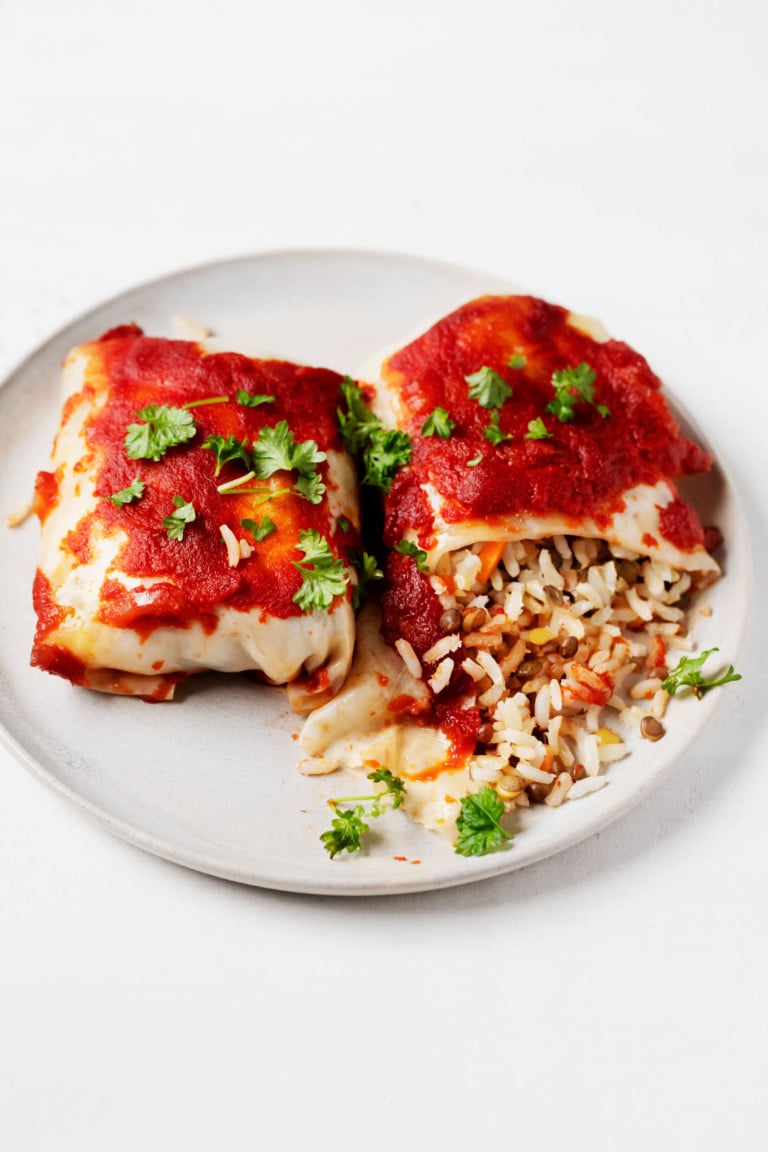
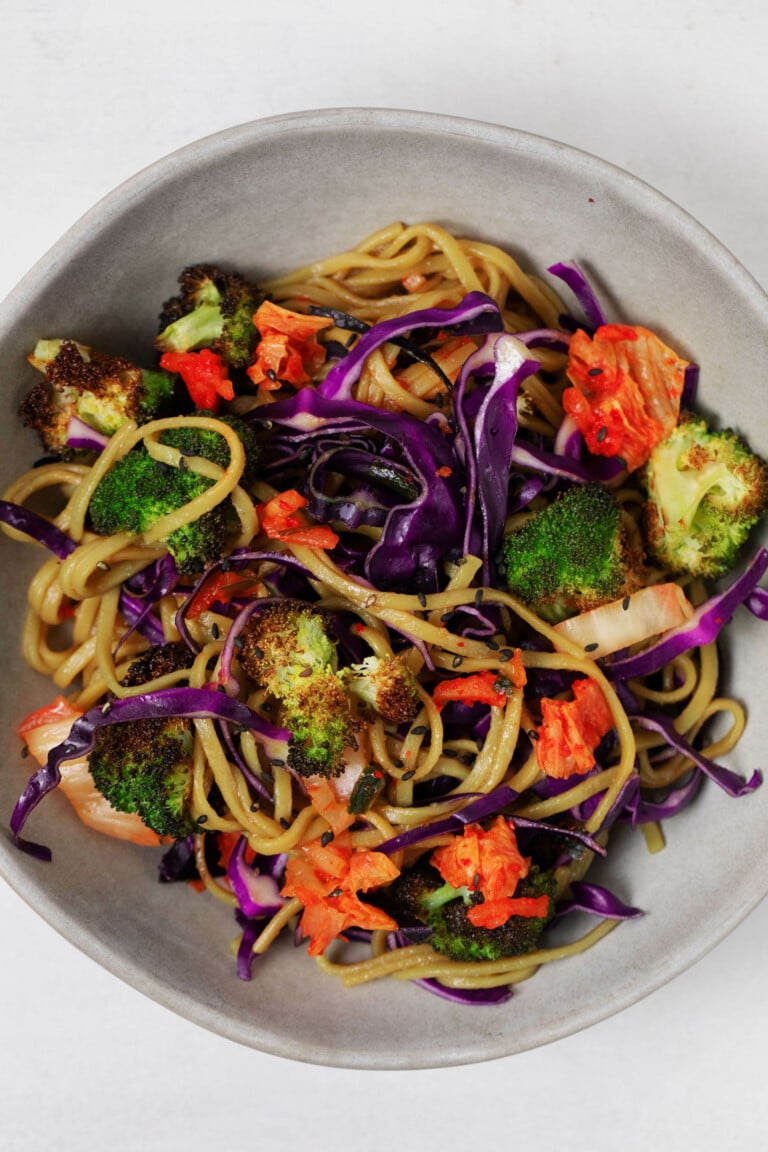
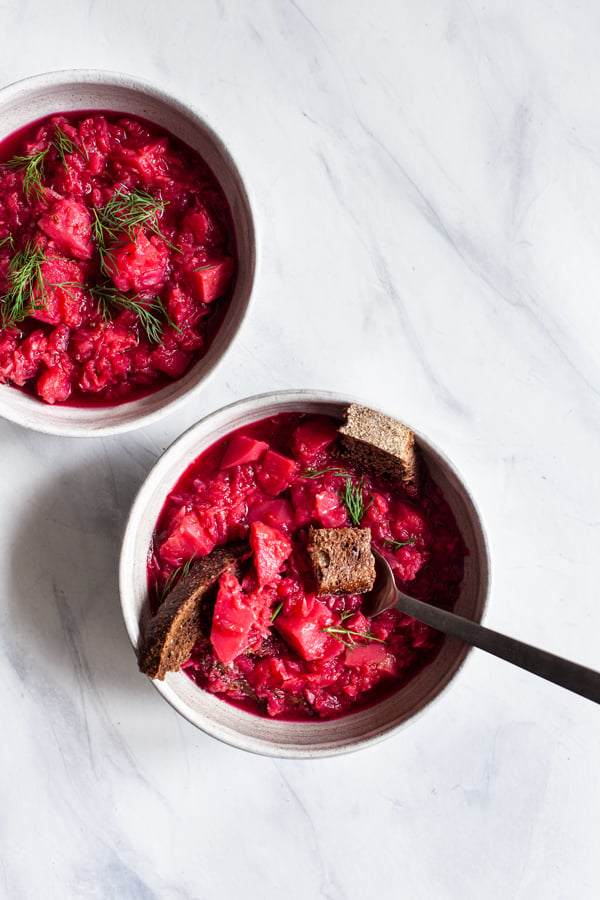
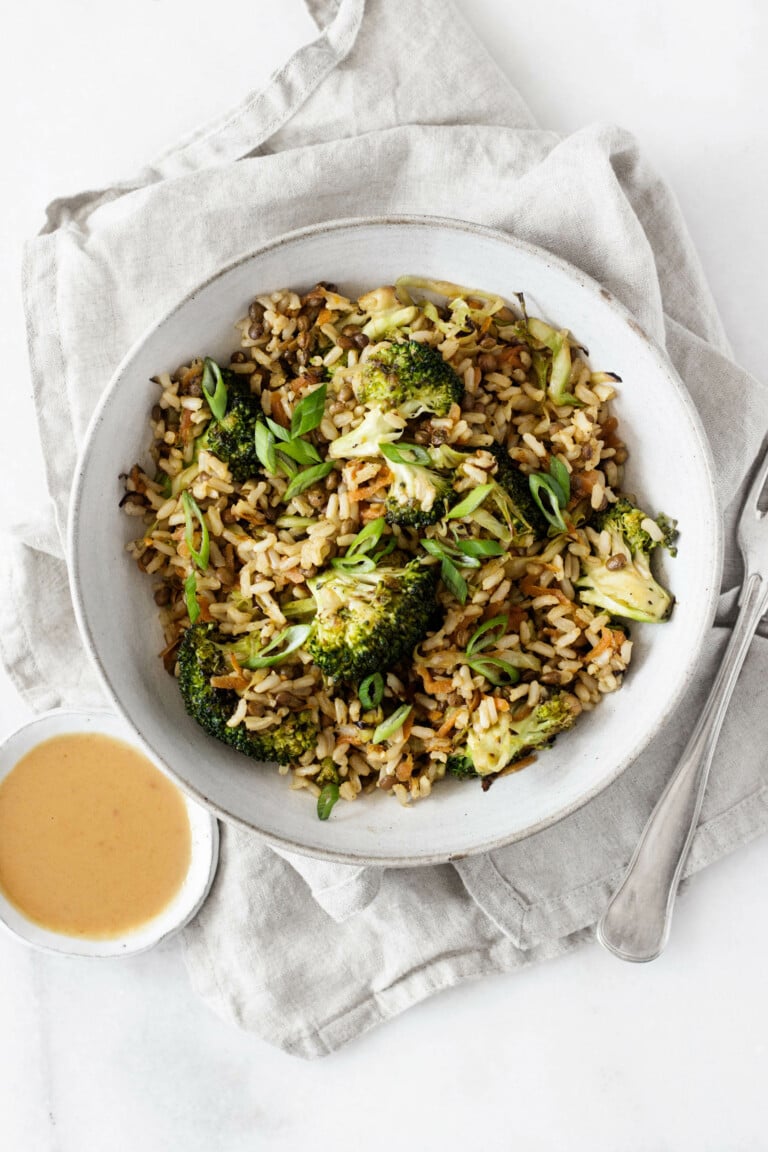
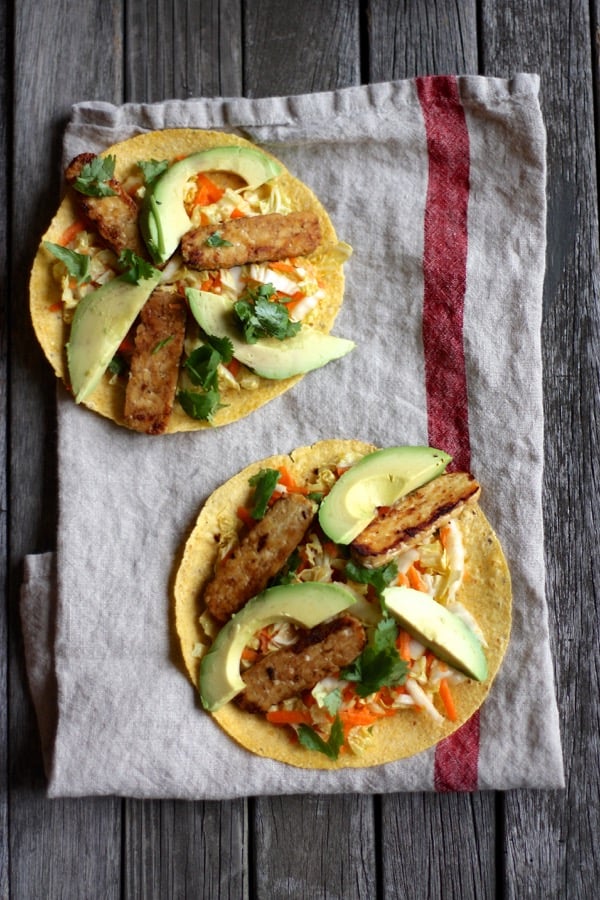
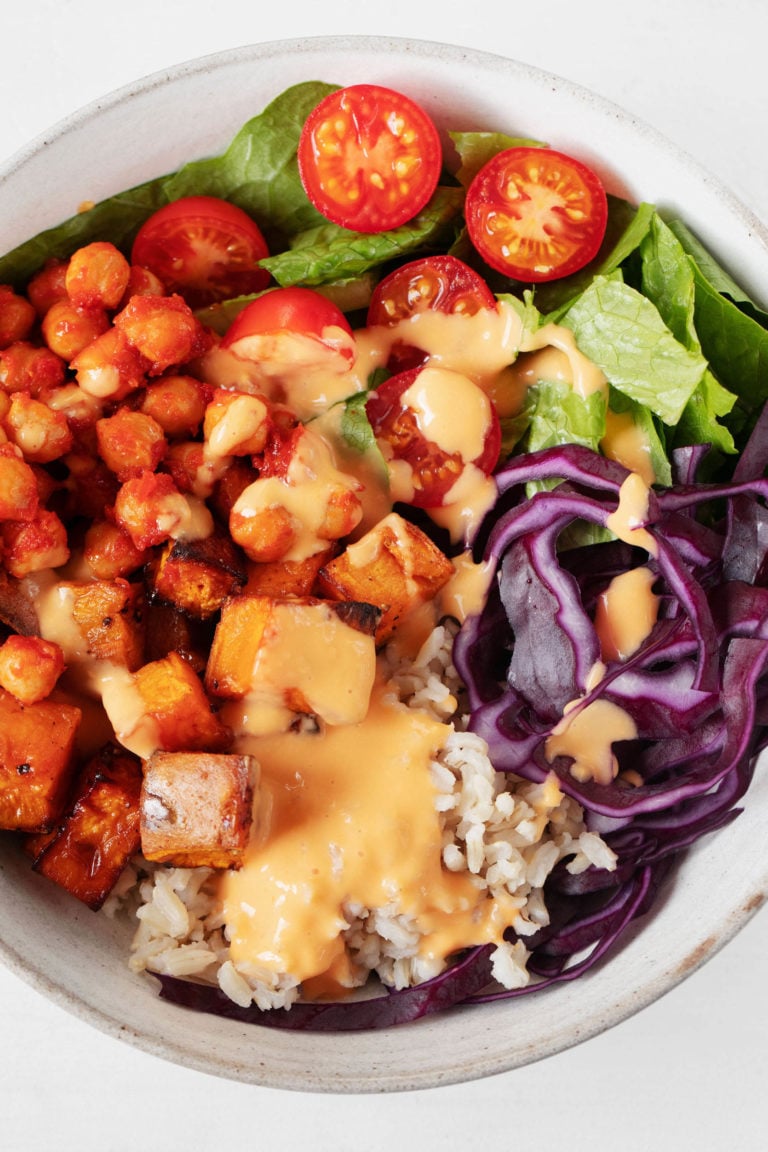
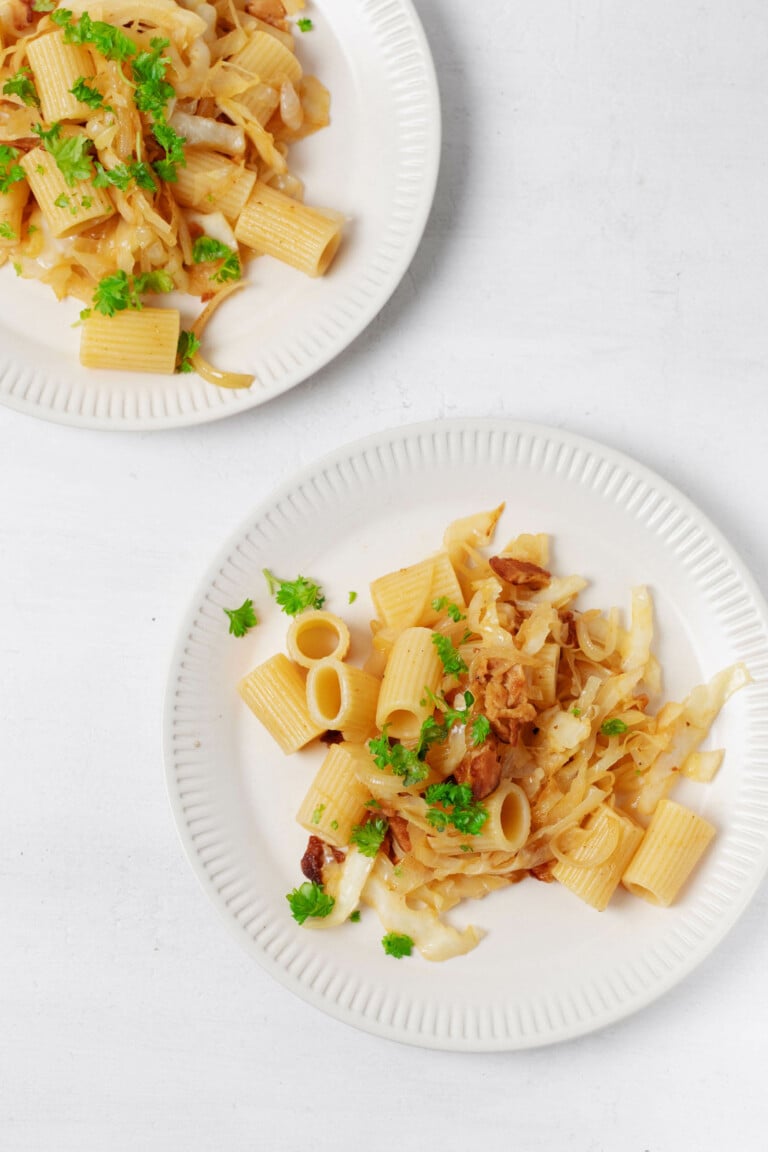
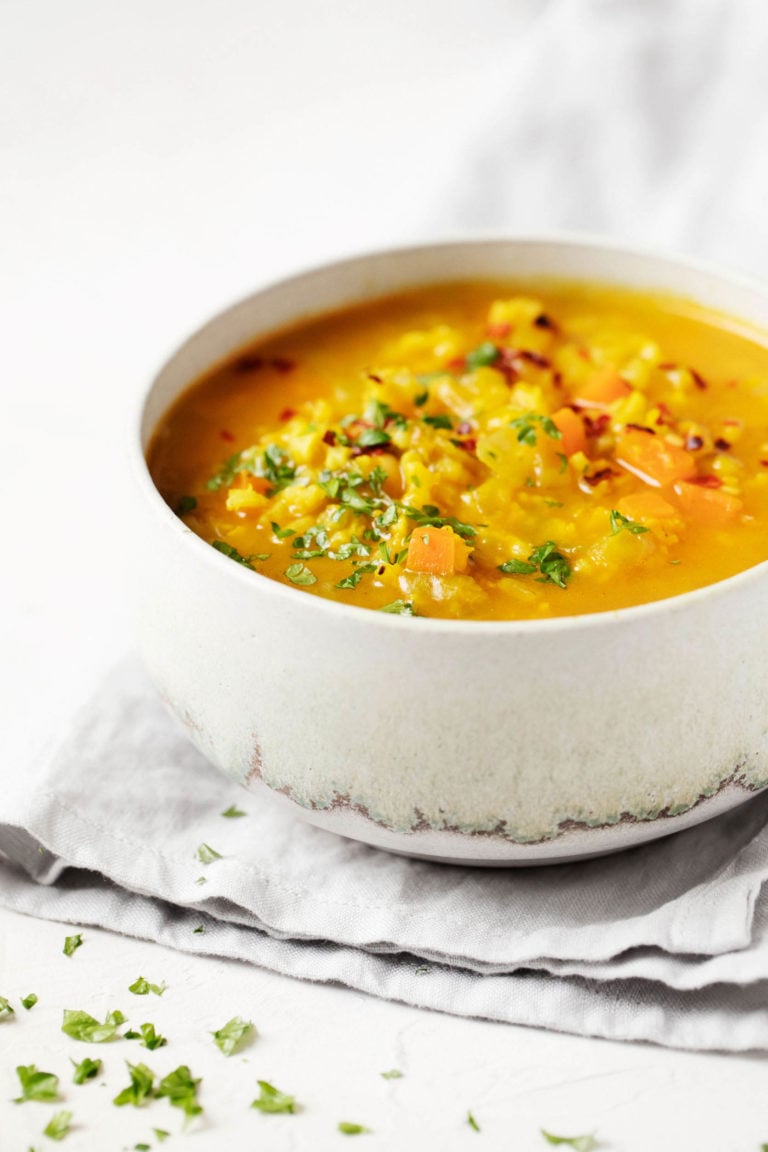
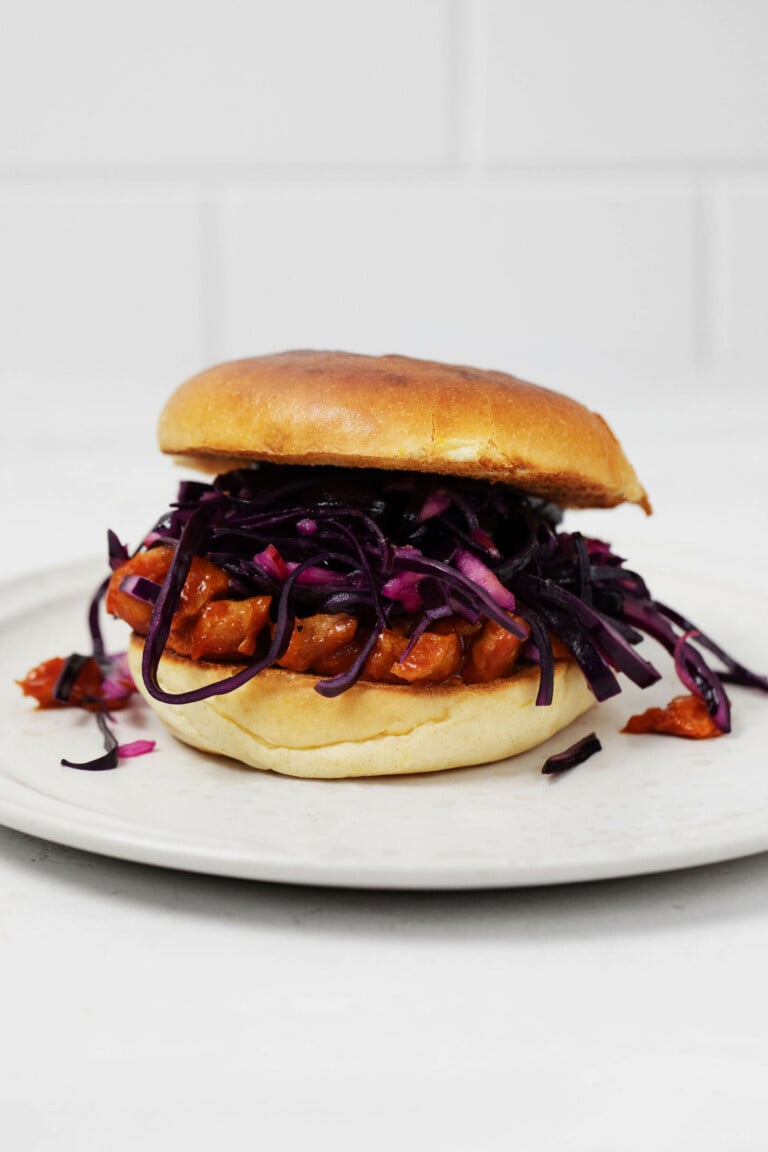
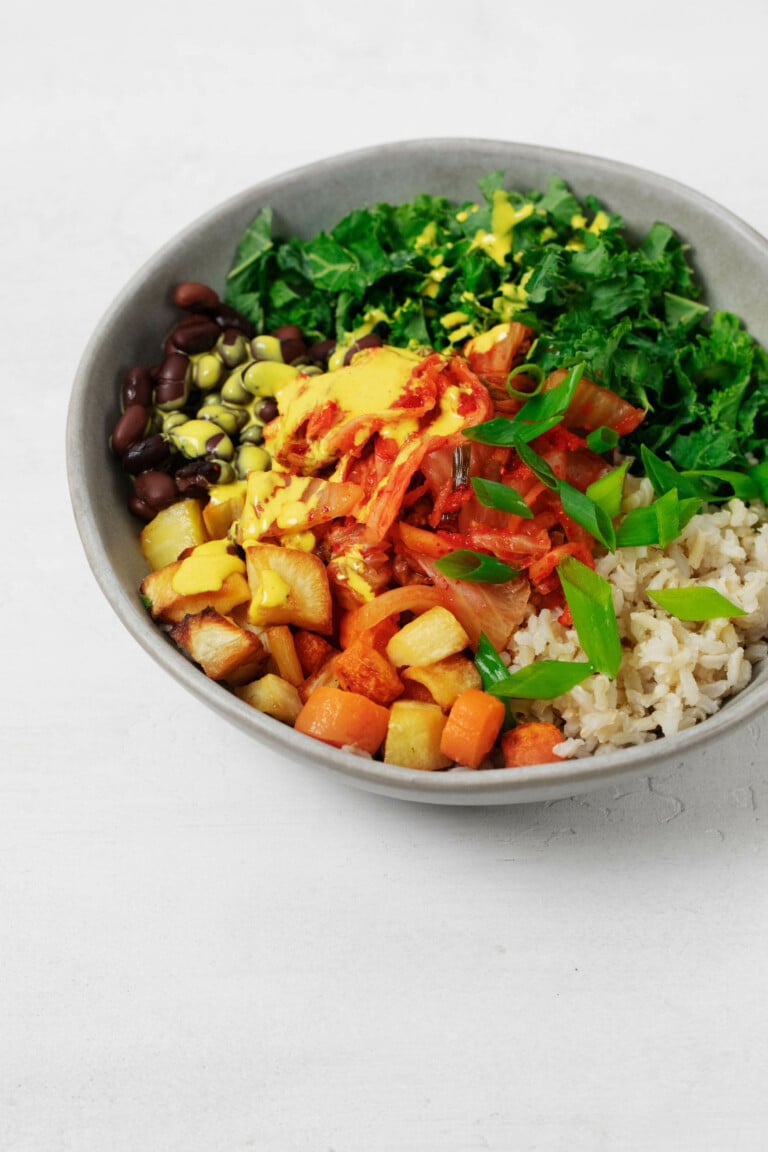
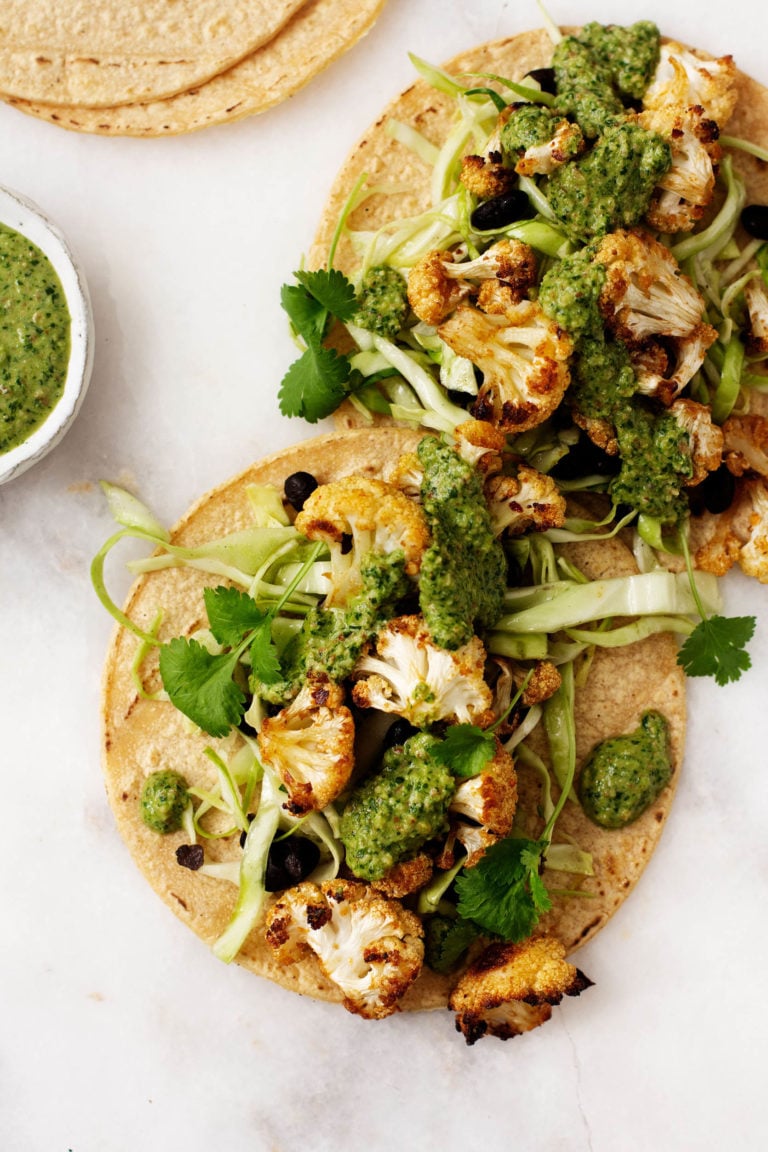
Salads and sides
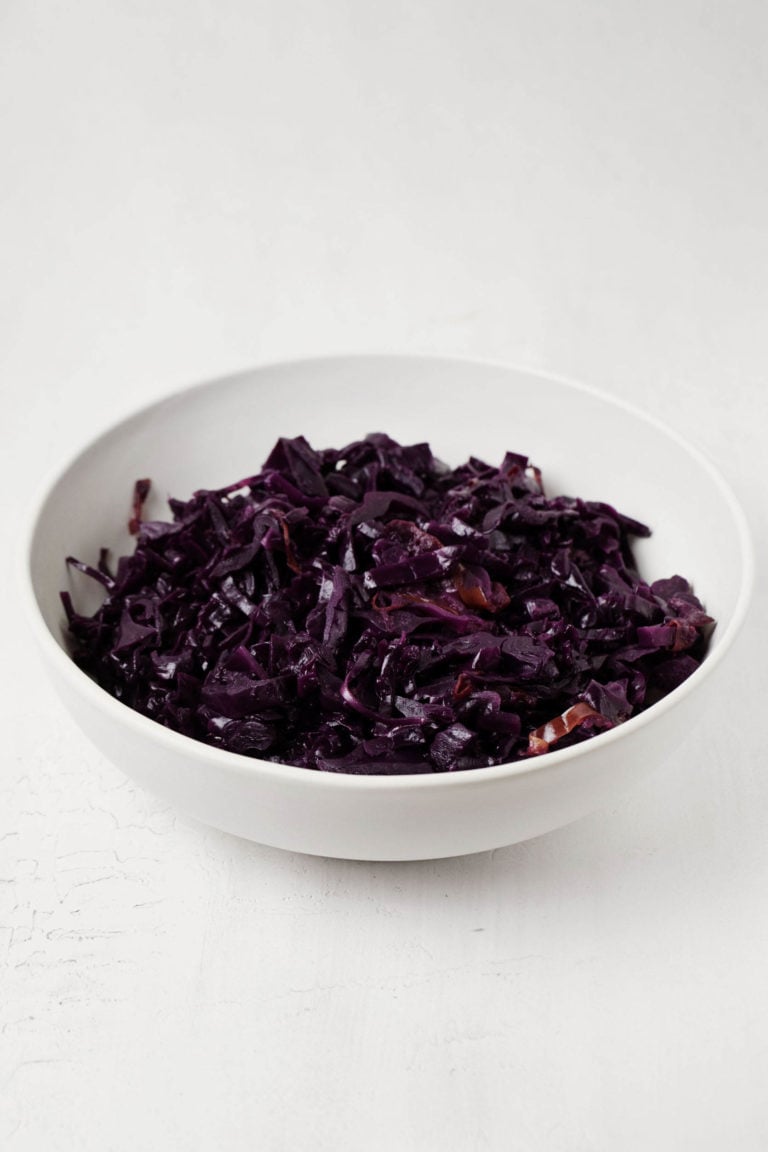
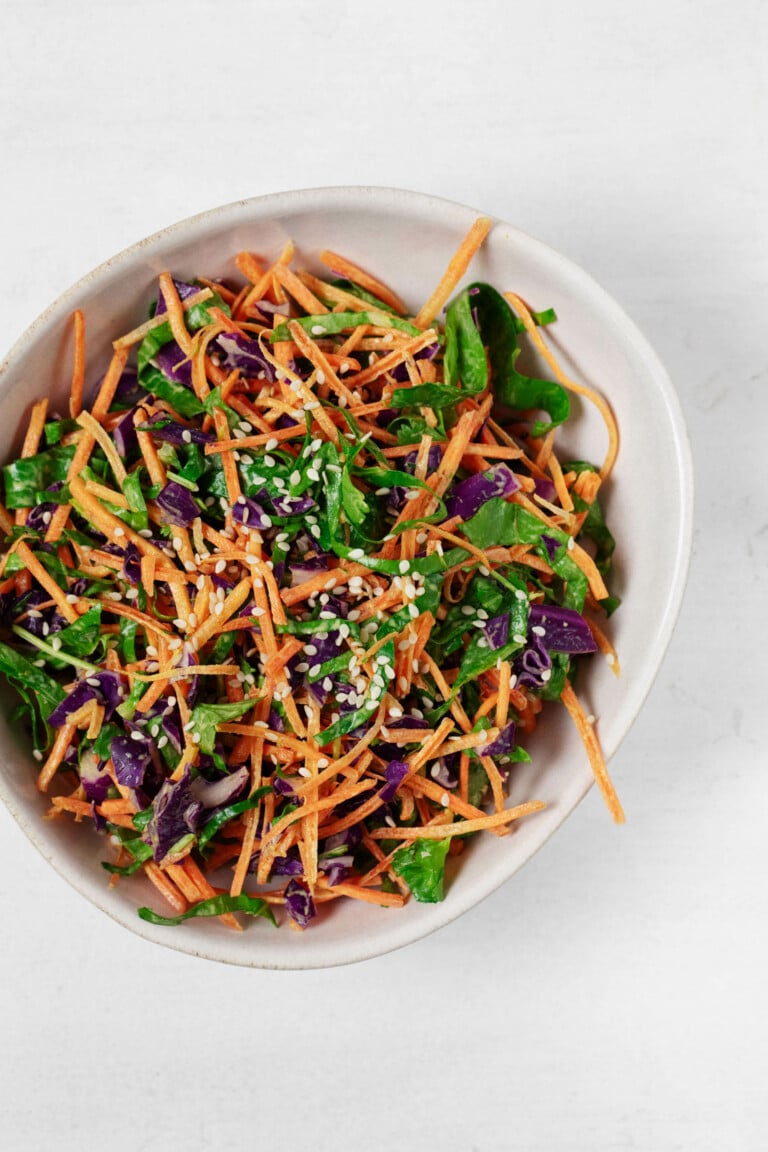
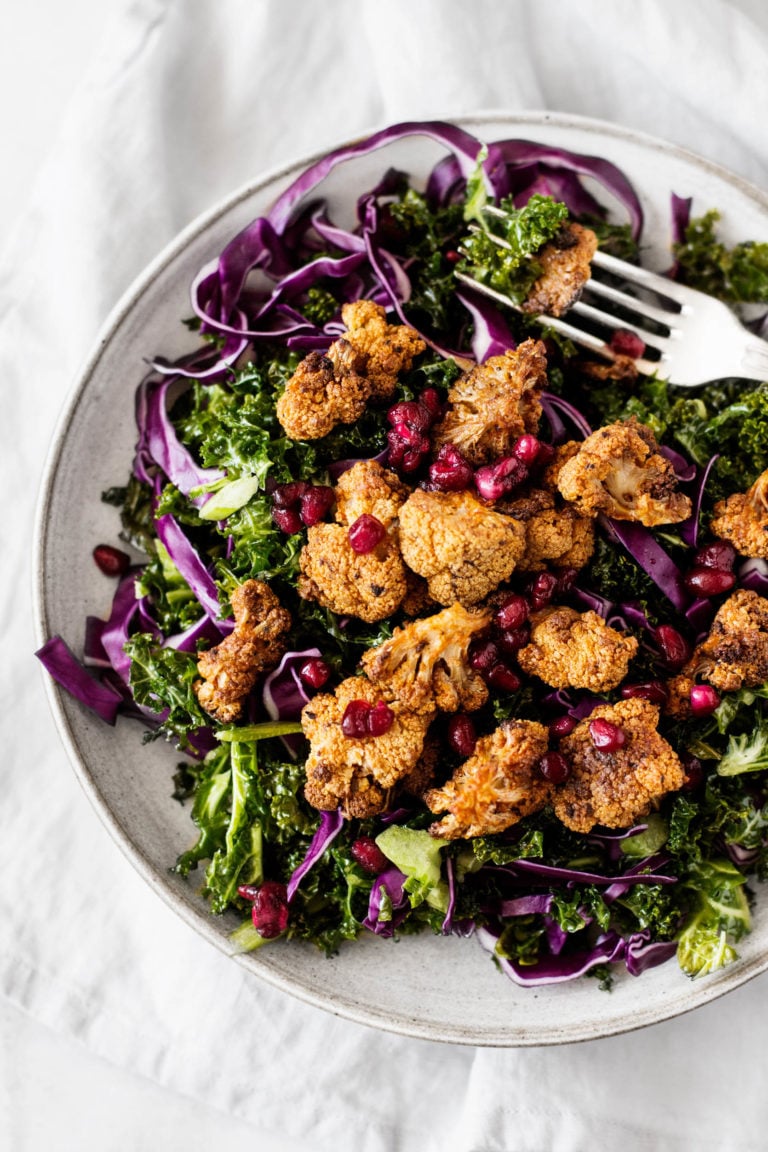
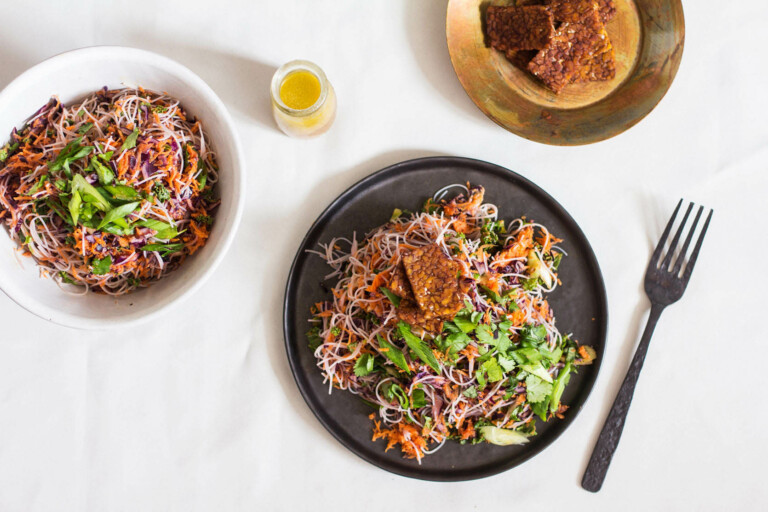
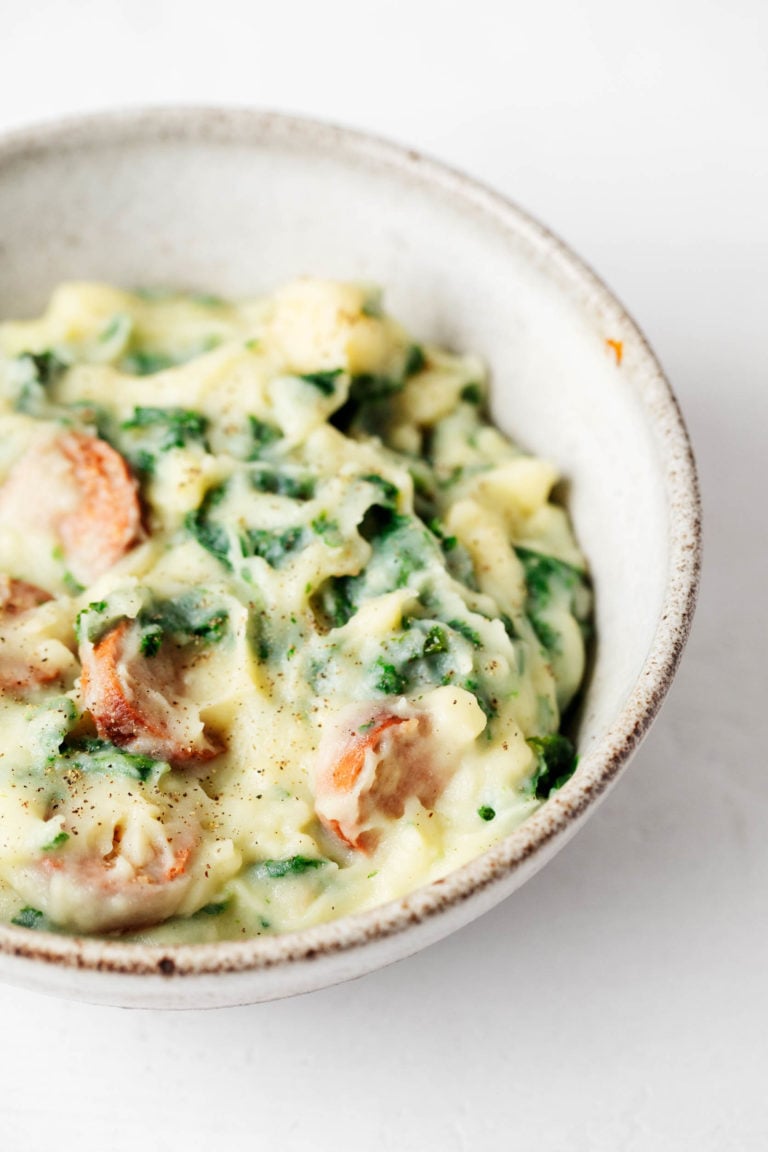
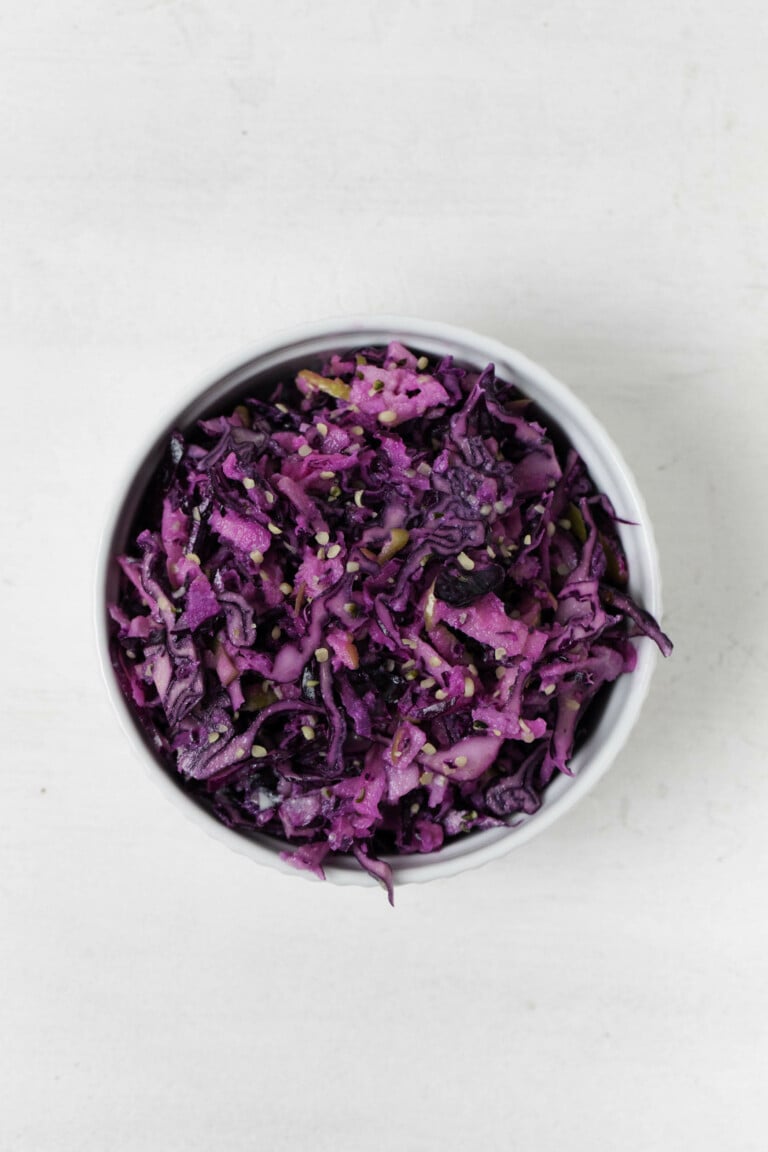
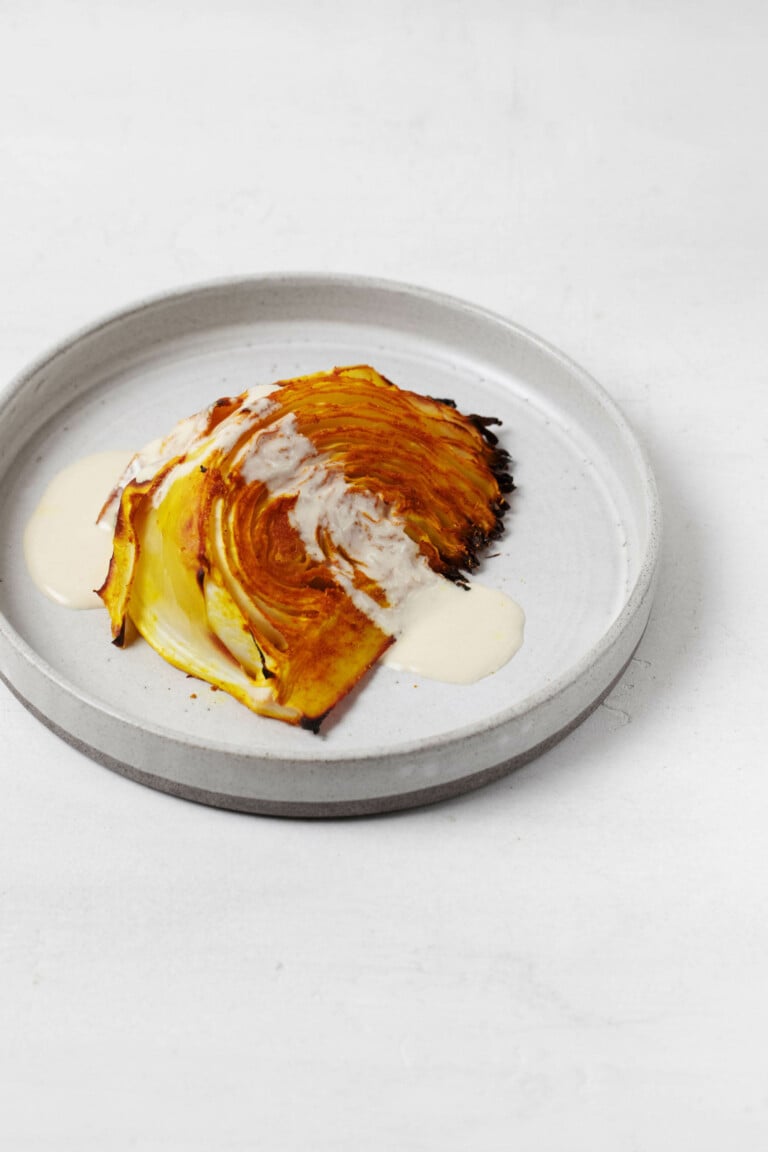
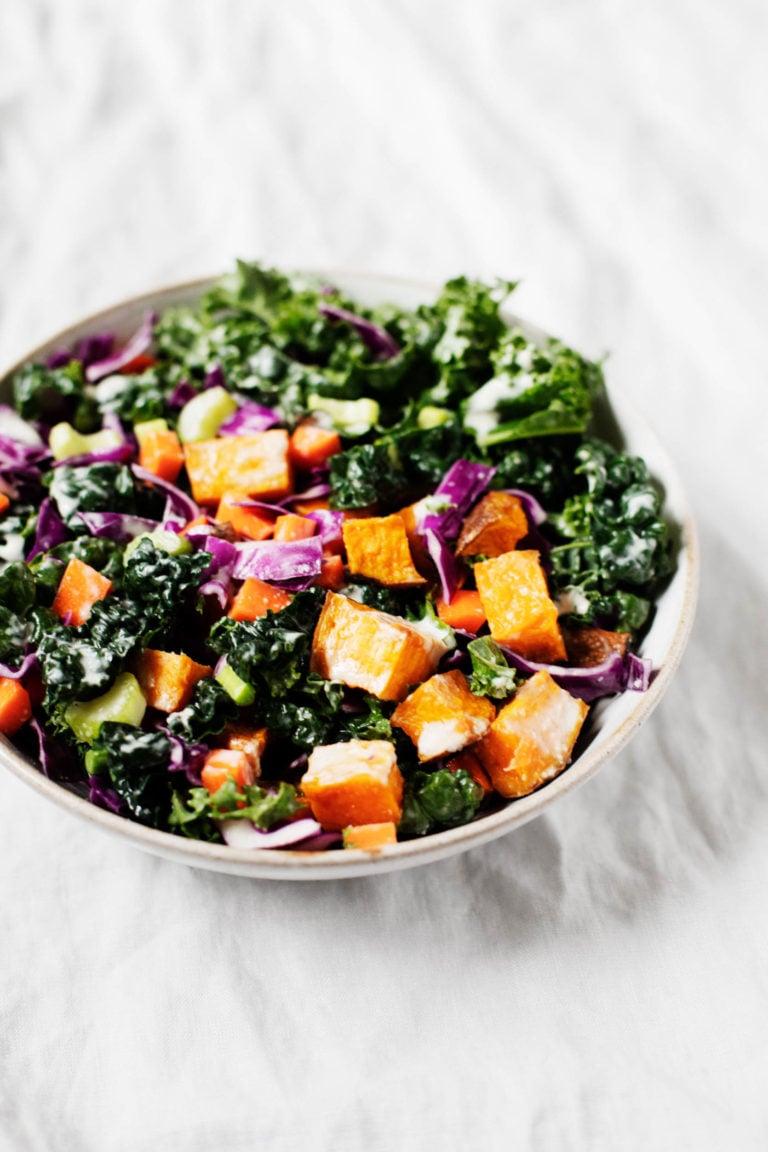
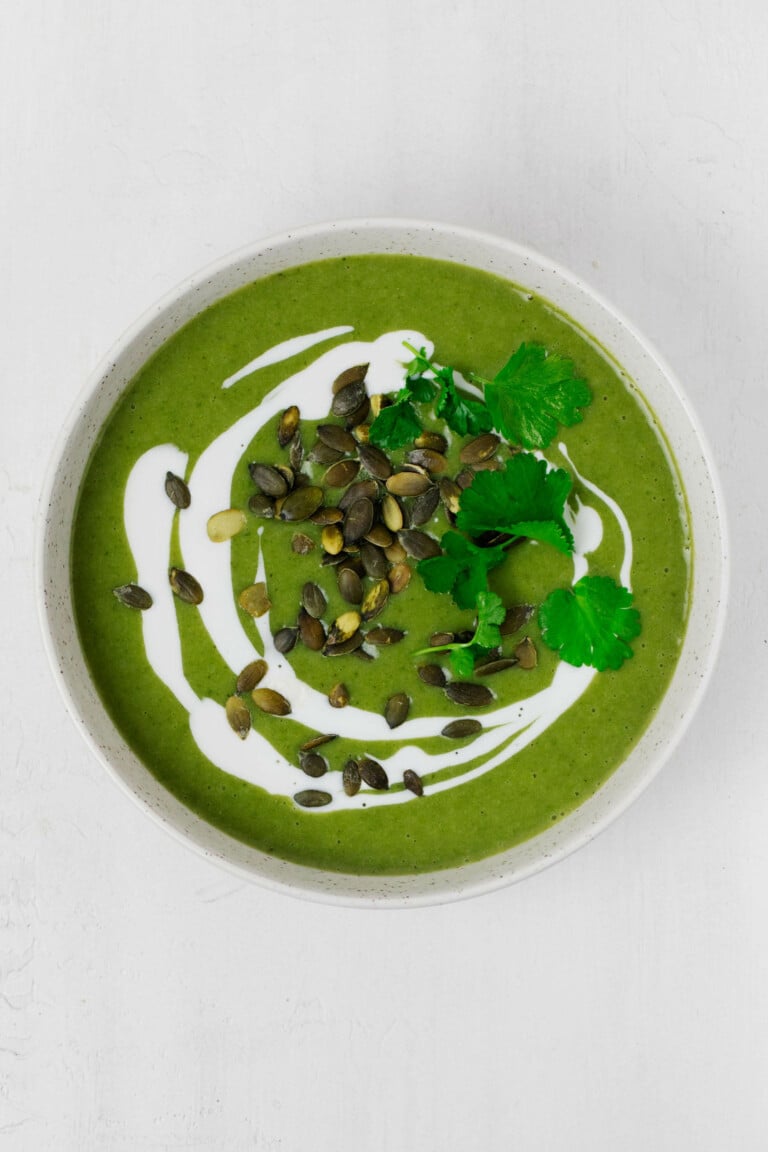
Caramelized Cabbage Onion Pasta
There’s much that I love in so many of the recipes above. But there’s one cabbage dinner on the list that I love and make more than any other.
It’s a warm, savory smoky dish of caramelized cabbage onion pasta.
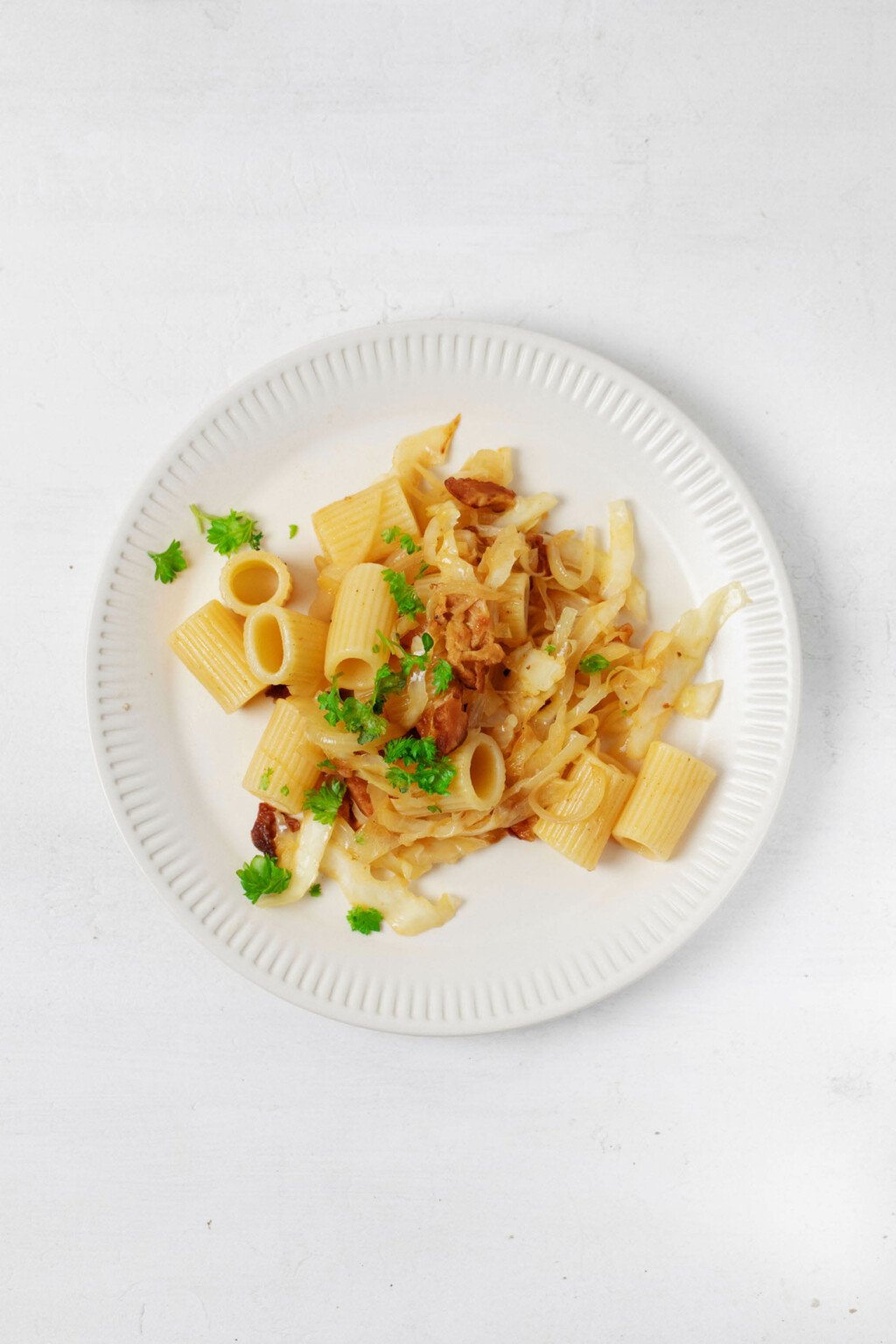
Since I first prepared the pasta dish in 2019, I’ve made it so many times.
The cabbage pasta is especially craveable in the winter months. It’s so hearty.
Plus, I love the way that sautéed onion and cabbage create sweet contrast with the savory and smoky flavors of the dish. This pasta includes a pinch of smoked paprika and also crispy tempeh bacon.
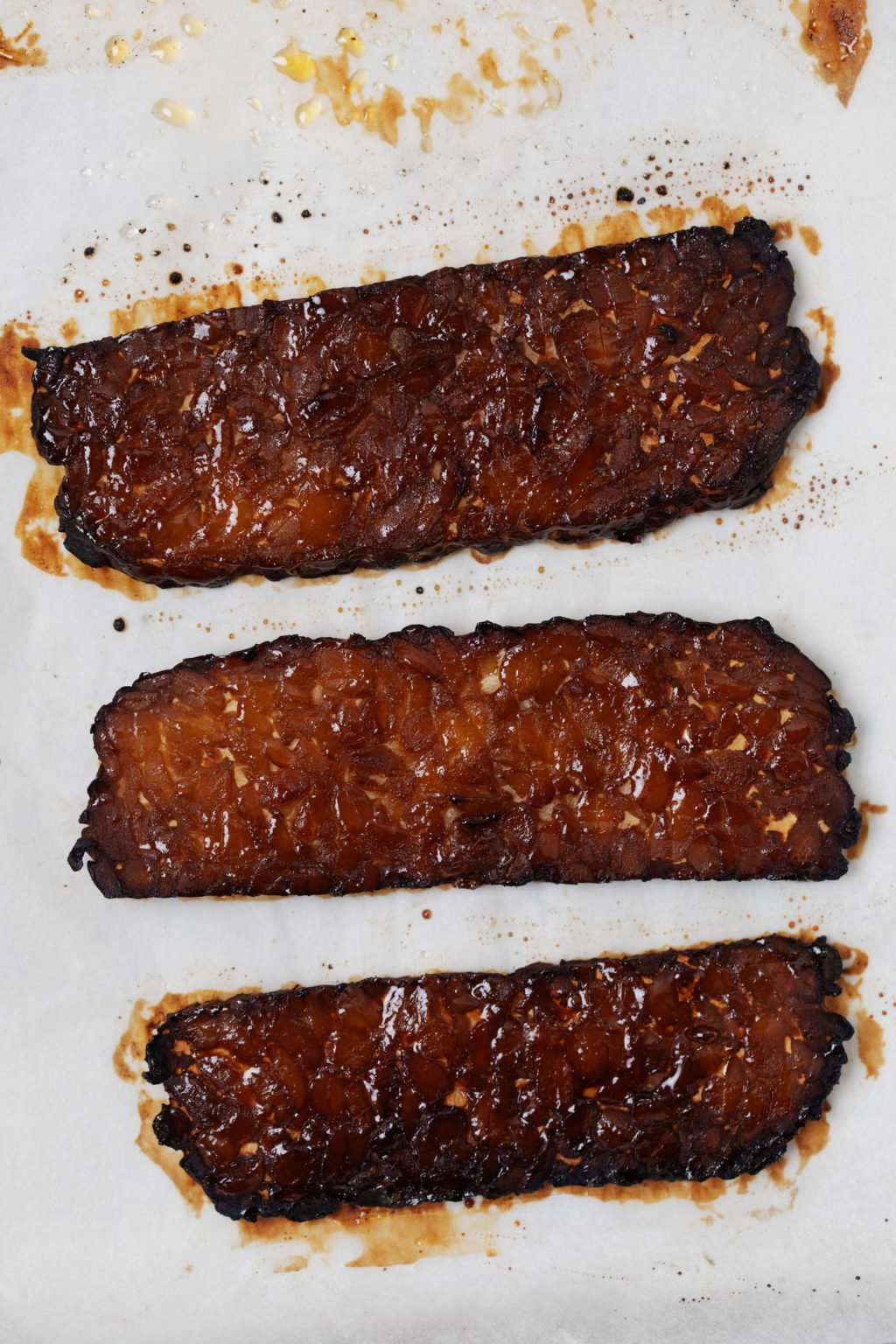
When all of the ingredients—pasta, sweet and browning onions and cabbage, plant-based bacon, maybe a pinch of fresh herbs—come together, the effect is comfort food magic.
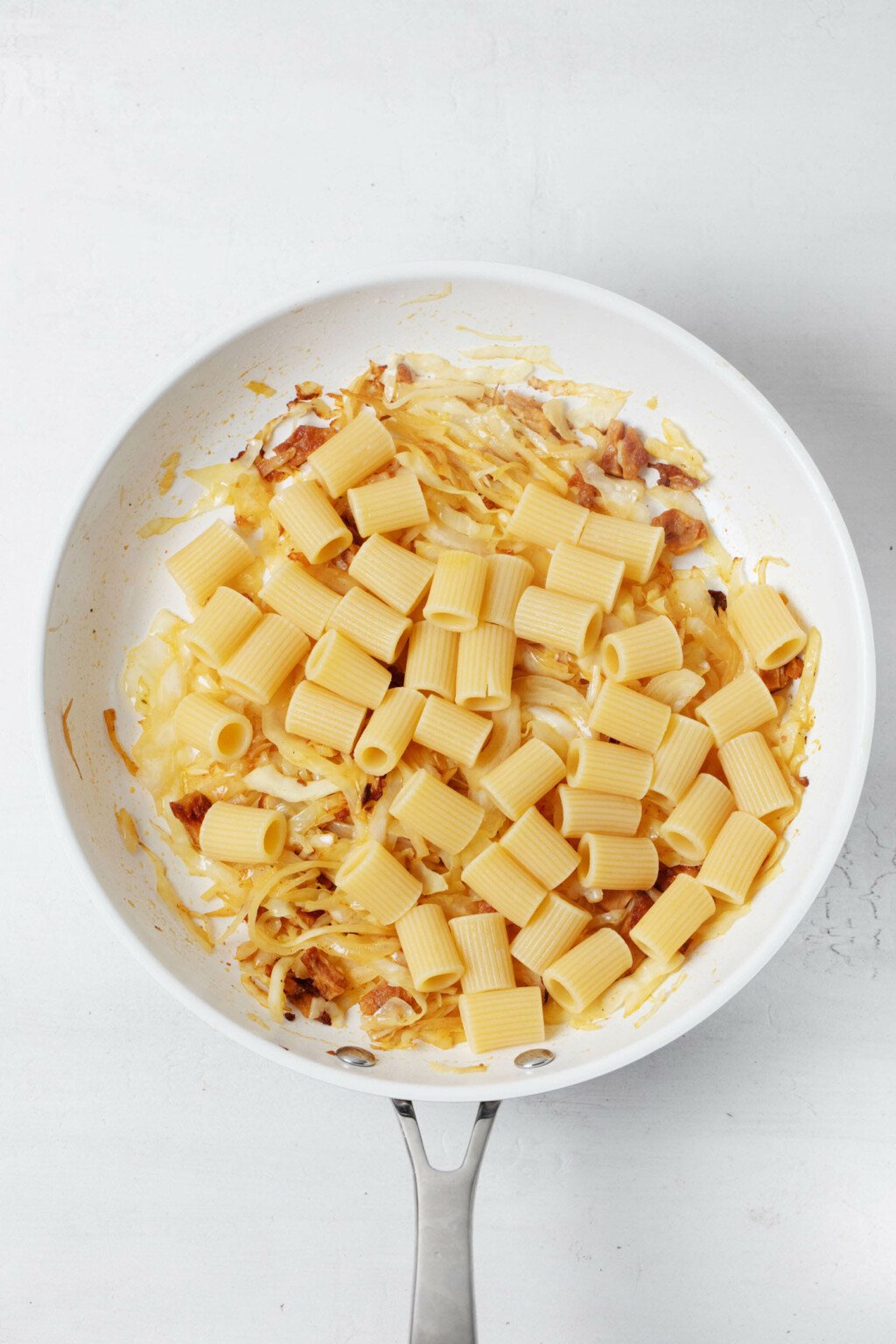
For all of cabbage’s many uses, one doesn’t see it in pasta recipes all that often. If you’ve never tried cabbage pasta before, this recipe is a really fun place to start.
Hope one or two of these recipes will give you inspiration to incorporate a truly wonderful vegetable into some new, everyday meals!
xo
This post may contain affiliate links. If you use these links to buy something I may earn a commission. Visit my privacy policy to learn more.

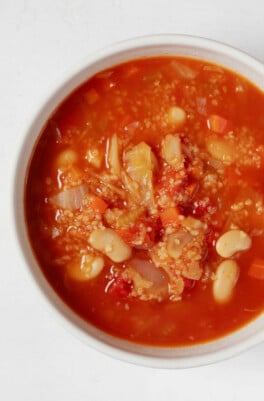
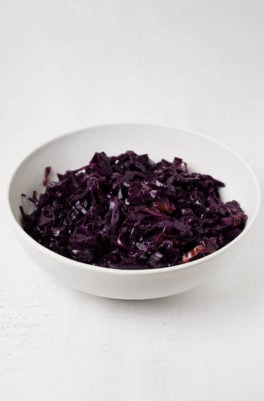
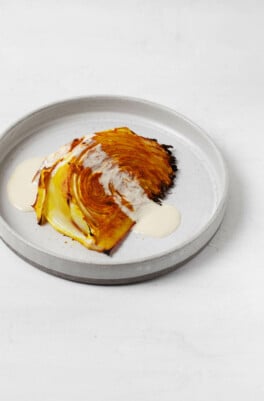
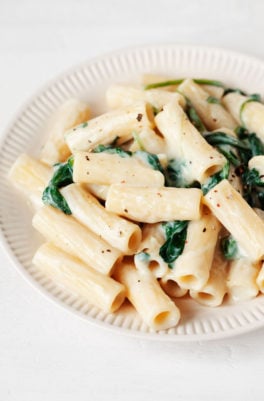
Leave a Comment
It’s great to know someone who gets as excited about cabbage as I do. I feel uneasy if I don’t have a cabbage in the fridge. One of the things I like about cabbage is that it is low in oxalates. My husband and son have to avoid them because of issues with kidney stones. My husband claims to hate coleslaw or any cabbage salad, but he always likes them whenever I make them. We recently had plumbing issues with access only to a tiny bathroom sink and the toilet (thank goodness!). I had to streamline my cooking and made a huge batch of coleslaw and added chickpeas and golden raisins to make it a complete meal. We happily ate out of the bowl for two days and avoided lots of dishes.
Here’s another cabbage tip: place an outer cabbage leaf on the cut side of a cabbage to avoid browning.